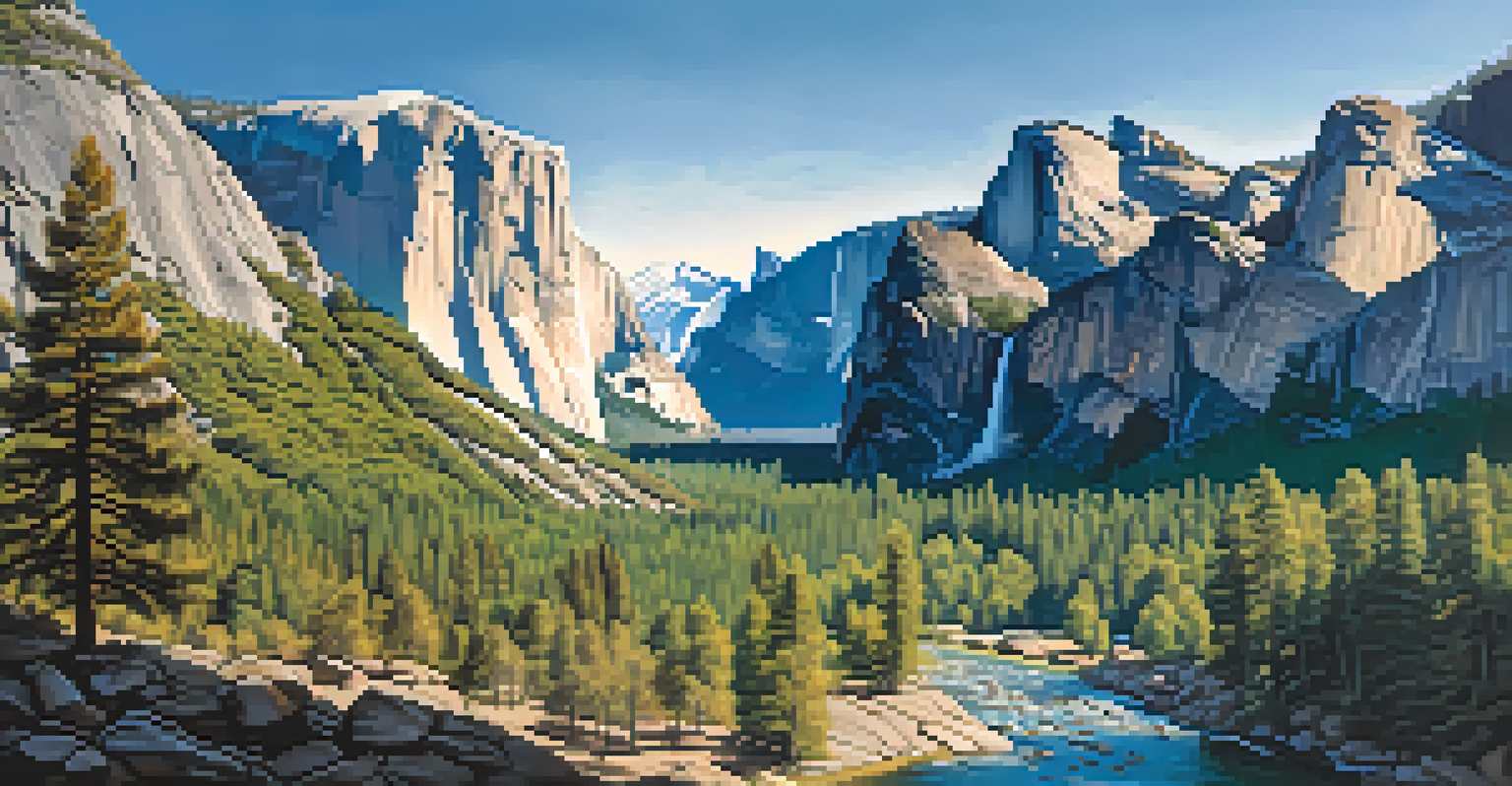Exploring National Park History and Cultural Significance

The Birth of America's National Parks: A Historical Overview
The concept of national parks began in the mid-19th century, with the establishment of Yellowstone in 1872. This revolutionary idea aimed to preserve natural beauty for future generations. It marked a significant shift in how society viewed land, moving from exploitation to conservation.
In every walk with nature one receives far more than he seeks.
As more parks were designated, such as Yosemite and Sequoia, the movement gained momentum, driven by influential figures like John Muir. Muir's passionate advocacy for nature conservation played a crucial role in raising public awareness about the importance of protecting these lands.
By the early 20th century, the National Park Service was established, ensuring the responsible management of these treasured sites. This marked a new chapter in American history, intertwining the ideals of preservation and recreation.
Cultural Significance: Parks as Symbols of National Identity
National parks have become powerful symbols of American identity, representing not only natural beauty but also the values of freedom and exploration. They embody the spirit of adventure that many associate with the American experience.

These parks serve as reminders of the nation’s diverse natural heritage, showcasing landscapes that range from towering mountains to serene forests. Each park tells a unique story about the land and its people, enriching the cultural tapestry of the United States.
National Parks: A Conservation Legacy
The establishment of national parks marked a pivotal shift from land exploitation to a commitment to conservation and responsible management.
Furthermore, they offer a space where people from all walks of life can connect with nature, fostering a sense of community and shared responsibility for the environment. This cultural significance deepens our understanding of what it means to be stewards of the Earth.
Indigenous Peoples and Their Connection to National Parks
Long before national parks were established, Indigenous peoples inhabited and thrived on these lands. Their rich histories and deep spiritual connections to nature are often overlooked in the broader narrative of national parks.
The Earth has music for those who listen.
Many parks are located on land that holds significant cultural and historical value for Native American tribes. Recognizing this connection is essential in honoring their contributions and ensuring their voices are included in park management.
Efforts are being made to incorporate Indigenous knowledge and practices in the stewardship of these lands. This collaboration enriches the visitor experience and promotes a more inclusive narrative surrounding the parks.
National Parks as Living Laboratories for Conservation
National parks serve as vital research sites, offering scientists and conservationists the opportunity to study ecosystems in their most pristine forms. This research helps us understand the impacts of climate change, pollution, and human activity on biodiversity.
For example, Yellowstone's wolf reintroduction project has provided valuable insights into trophic cascades and ecosystem health. Such initiatives highlight the parks' role in advancing scientific knowledge and informing conservation strategies.
Cultural and Economic Importance
National parks serve as symbols of American identity, fostering community connections while significantly boosting local economies through tourism.
Moreover, these protected areas serve as benchmarks for assessing the effectiveness of conservation efforts. By studying these ecosystems, we can develop better practices to safeguard our planet's future.
The Role of Recreation in National Parks' Cultural Fabric
Recreation is a fundamental aspect of the national park experience, drawing millions of visitors each year for activities like hiking, camping, and wildlife watching. This recreational aspect fosters a deep appreciation for nature, encouraging people to engage with and protect these environments.
Parks provide a space for individuals and families to bond over shared experiences in the great outdoors, creating lasting memories and connections. These experiences often inspire a passion for conservation and environmental stewardship.
Additionally, parks host various cultural events and programs that celebrate the heritage of the land and its people. Such initiatives enrich the visitor experience and highlight the importance of preserving both natural and cultural resources.
Economic Impact of National Parks on Local Communities
National parks significantly contribute to local economies by attracting tourists who spend money on lodging, food, and activities. This influx of visitors supports jobs and generates revenue for surrounding communities.
For example, towns near Yosemite National Park have flourished due to the tourism generated by the park, showcasing the economic benefits of preserving natural landscapes. These parks not only protect the environment but also stimulate economic growth.
Challenges Ahead for National Parks
Despite their value, national parks face pressing challenges such as climate change and overcrowding, necessitating innovative solutions for their preservation.
Moreover, the economic impact goes beyond immediate spending; it fosters a culture of sustainability and investment in conservation-related initiatives. This creates a win-win situation for both nature and local economies.
Challenges Facing National Parks and Their Future
Despite their significance, national parks face numerous challenges, including climate change, overcrowding, and funding issues. These threats put immense pressure on natural resources and park infrastructure, requiring careful management and innovative solutions.
For instance, increased visitor numbers can lead to environmental degradation, prompting park managers to implement measures like timed entry systems to protect fragile ecosystems. Balancing access with conservation is a complex task that requires ongoing attention.

Looking ahead, the future of national parks will depend on our collective commitment to preserving these irreplaceable landscapes. By advocating for sustainable practices and supporting conservation efforts, we can ensure that future generations will also enjoy the beauty and cultural significance of our national parks.